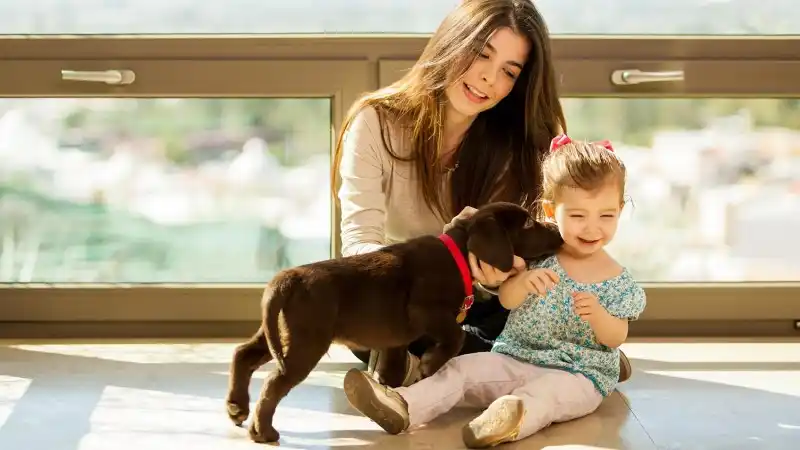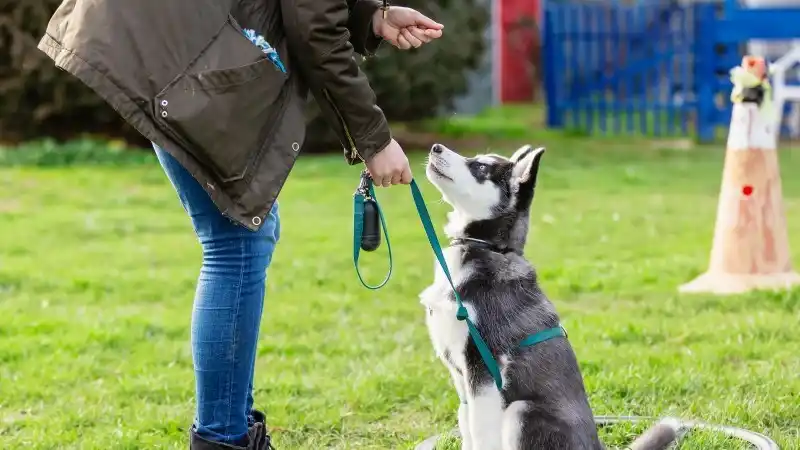Tips for Better Communication with Your Dog
Communicating with dogs is the key for human-canine relationships. Learn more about dog communication, behavior, training, and how to talk with your pet!
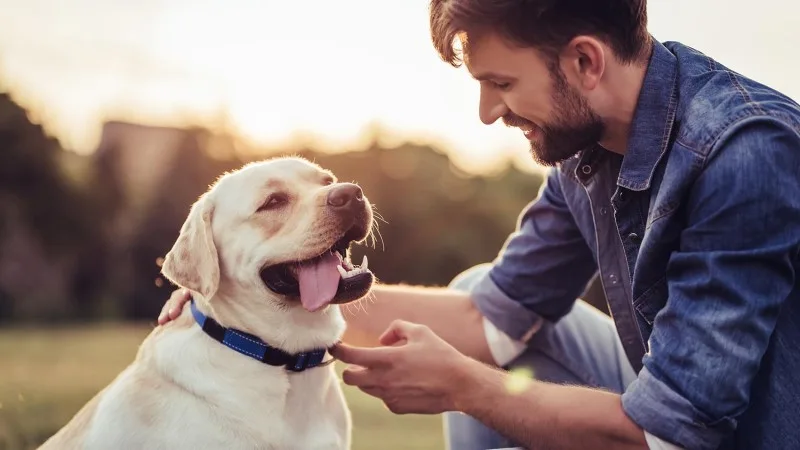
Learning to communicate with your dog is a key ingredient of dog obedience and the marker of successful human-canine relationships. So, this bond should be the main focus when training your dog. The truth is, being a good communicator can make a dog invaluable as a companion, protector, and playmate.
When dogs have not had obedience training and they don’t follow commands, there’s a good chance that they’ll get caught off guard or injured in some cases. Dogs follow our visual cues and body language, such as human gazing and pointing, when they don’t know where to look or listen.
Consider working with a professional dog trainer with years of experience to learn how to effectively communicate with your dog. Canine communication requires patience, and the goal is to live with a happy dog. Leave your frustration at the door!
Learn how to communicate and improve your relationship with these tips.
How To Talk to Dogs
1. Give Training Commands Once
Learning how to give your dog commands can be challenging for both you and your dog. Humans often repeat commands out of frustration during a training session, which is not ideal. It is best to give commands once when you train your dog, so they understand what you’d like them to do after the first verbal cue.
Repeating words during training sessions indicates to your dog that listening the first (or second or third) time is optional. Generally, you want your dog to pay attention to a recall command (for example “come”), so they don’t injure themselves or get hit by a car. When commands mean life or death, always use a high-pitched voice to communicate the verbal cue effectively.
Many trainers don’t recommend using verbal commands until your dog understands the desired behavior. Instead, talk to your trainer about when to add a verbal command based on the specific skill and your dog’s progress.
2. Use a Consistent Marker Signal
A marker signal offers positive reinforcement when accompanied with rewards like their favorite treats. These signals indicate when your dog has followed a command correctly.
A marker signal can be anything from a verbal “Yes” or “Yep” or a handheld training clicker. Many trainers love the consistency that clicker training offers because clickers do not change tone or volume, unlike the human voice. When you use the clicker, you'll get a reaction from your dog, ranging from a twitch of your dog's ears to a slight turn of the head.
You can also use hand signals as a marker. Remember that all hand signals need to be visible to deaf dogs. Your reinforcer, or treat, should occur within 1-3 seconds after your marker signal.
3. Pair Verbal Cues with Hand Signals or Body Gestures
To better communicate with your dog, try pairing a verbal cue with a body signal. Canines are experts at reading and noticing body language, because that’s how they communicate with other dogs in packs and social situations.
One signal that works well is the open hand signal, which is used when training pups to sit. Open your hand every time you say “sit,” and your dog will come to understand this command. Eventually, all you will need to do is open your hand, and your dog will sit.
Hand signals are an incredibly valuable mode of communication when you take your dog to a crowded area or setting where hearing is difficult. By associating hand signals with commands, you give yourself another way to deliver information to your dog, which can be a lifesaver in an emergency.
All types of human body language can help communicate with dogs. According to Mikkel Becker of Vetstreet, dogs can be taught to understand and react to various physical signals from their human companions. When we consider that dogs use every part of their bodies, from the tip of their nose to the tip of their tail, to communicate, it makes sense that they would be open to all forms of communication.
4. Decide on a Release Word
Your dog needs to understand when exercise or playtime is over. For example, if you have asked for your dog to hold a “go to your mat” behavior or a sit position, the release word will indicate to your dog when they are allowed to be free. Examples of release words include:
Okay
Done
Free
Break
Release
When deciding your release word, choose something that rolls off your tongue. A lengthy or complex word is the last thing you want when trying to communicate something to your dog, especially in a crisis.
Finding a release word that works with your dog is valuable no matter their age, working as a great training tool for puppies and an excellent refresher course for senior dogs.
5. Show Your Dog How to Behave
Interrupting your dog with a “No” or “Eh-Eh” is a good way to avoid inappropriate behavior. Help your dog succeed by showing them how to behave before they have the chance to exhibit undesired behavior, such as counter surfing.
If your dog tends to counter surf, it’s best to give them a place in the kitchen to lie down and reward them with treats and praise if they comply. Dogs may lie on their mats of their own free will or you cueing the behavior will do the trick. You may reward your dog with treats when they relax in the kitchen. If your dog can calmly stand near you with all four paws on the ground and a curious nose away from countertops, they deserve a treat!
Another good idea is to teach your dog to offer polite behavior, such as a “sit,” when greeting guests. Set your dog up for success by having them on a leash and ask guests to approach slowly and calmly. To encourage good behavior, provide your dog with a treat, and only allow guests to pet your dog when they are calm and all four paws are on the floor.
6. Increase Difficult Skills Slowly
Slowly increase challenging skills for your dog. For example, they should first learn a simple skill in a quiet environment, such as your living room. Then, as you learn to give your dog commands, you can gradually train your dog to master skills in every room of the house. Once they’ve conquered the indoors, try the porch, backyard, and during walks.
If your dog starts to get the hang of it, increase the duration of a training period. Start with half a second or one treat before releasing your dog from a stationary pose. Then progress to one second, and follow that up by trying to use two treats as a reward.
7. Speak Less
Be aware that most of what you say is tuned out by your dog. You need to be clear when you give commands by using a start cue. Let your dog know it’s time for training and communicate clearly with your canine buddy.
When talking to your dog, give a verbal start cue, and be silent. If you are training a new dog or skill, do not have a conversation with another human during training – have that conversation later, so you do not confuse your pup with the extra banter. Remember, all that added human interaction and exchange also affects your body posture, tone of voice, and attitude during the session.
Now that you have learned to communicate with your dog, check out these blogs to learn about reading your dog’s body language and understanding dog-to-dog communication. Happy training!
Trainers Recommend Pet Insurance
A dog who recognizes your commands is less likely to cause an accident or injure themselves. Knowing how to communicate with your dog effectively is the only way to ensure they will follow your commands, even in the most stressful and trying situations.
But for those unexpected incidents, AKC Pet Insurance (underwritten by Independence American Insurance Company) offers Accident and Illness coverage that allows you to focus more on the health of your pet and less on costly veterinary bills. They also offer curable and incurable pre-existing condition coverage* after a 12-month waiting period.
*Not available in all states.
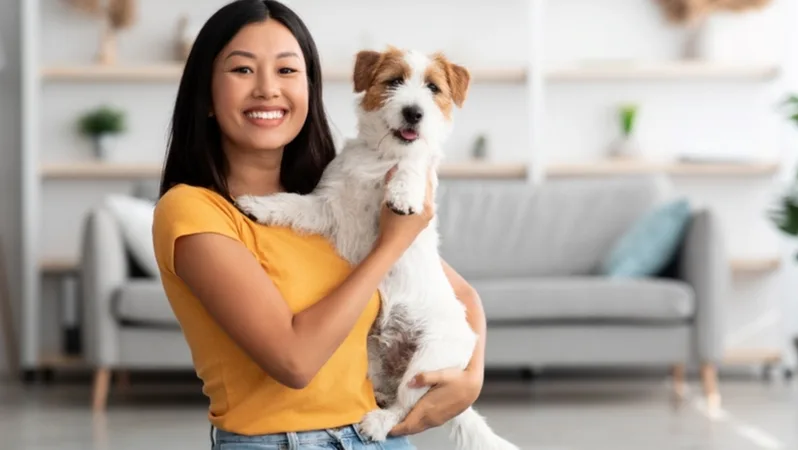
Every Dog and Cat Deserves the Pet Insurance of Champions
Get prize-winning care for your pets.
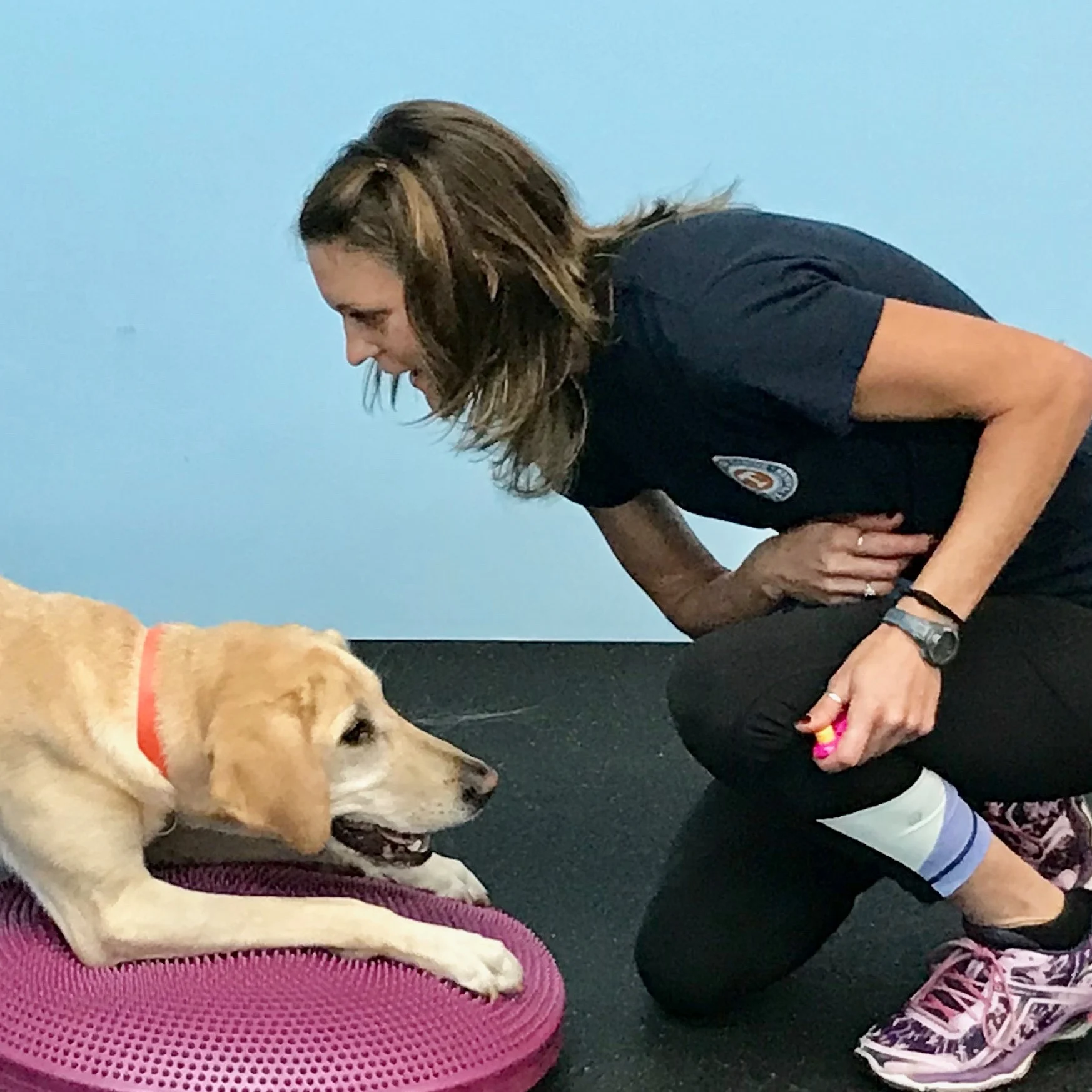
Jasey Day holds the Certified Canine Fitness Trainer (CCFT) credential through the University of Tennessee. She is a member of the Bobbie Lyons K9FITteam - a team of compassionate canine fitness instructors who actively teach others and continually expand their own knowledge. Since 2004, Jasey has taught a variety of workshops and classes on the following: Puppy, Canine Good Citizen/Family Pet, Advanced Family Pet, Canine Fitness, Canine Swimming, Rally, and Agility. In addition, Jasey has earned over 60 titles in Dock Diving, Agility, Rally, CGC and Trick Dog. Jasey has worked full time for the American Kennel Club since 2007 and teaches at Care First Animal Hospital in Raleigh, NC. Jasey’s Labrador Retrievers spend their free time hiking, training, and snuggling with Jasey.
READ MORE ARTICLES
